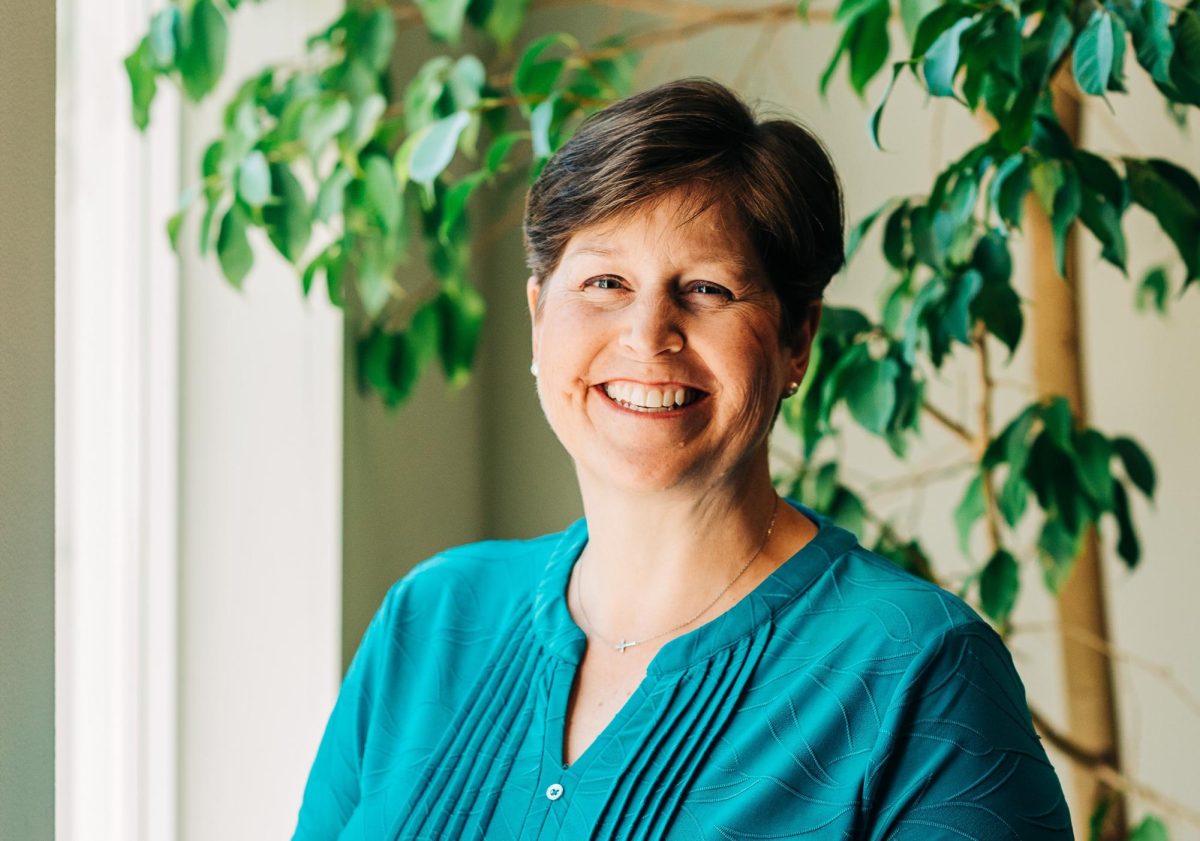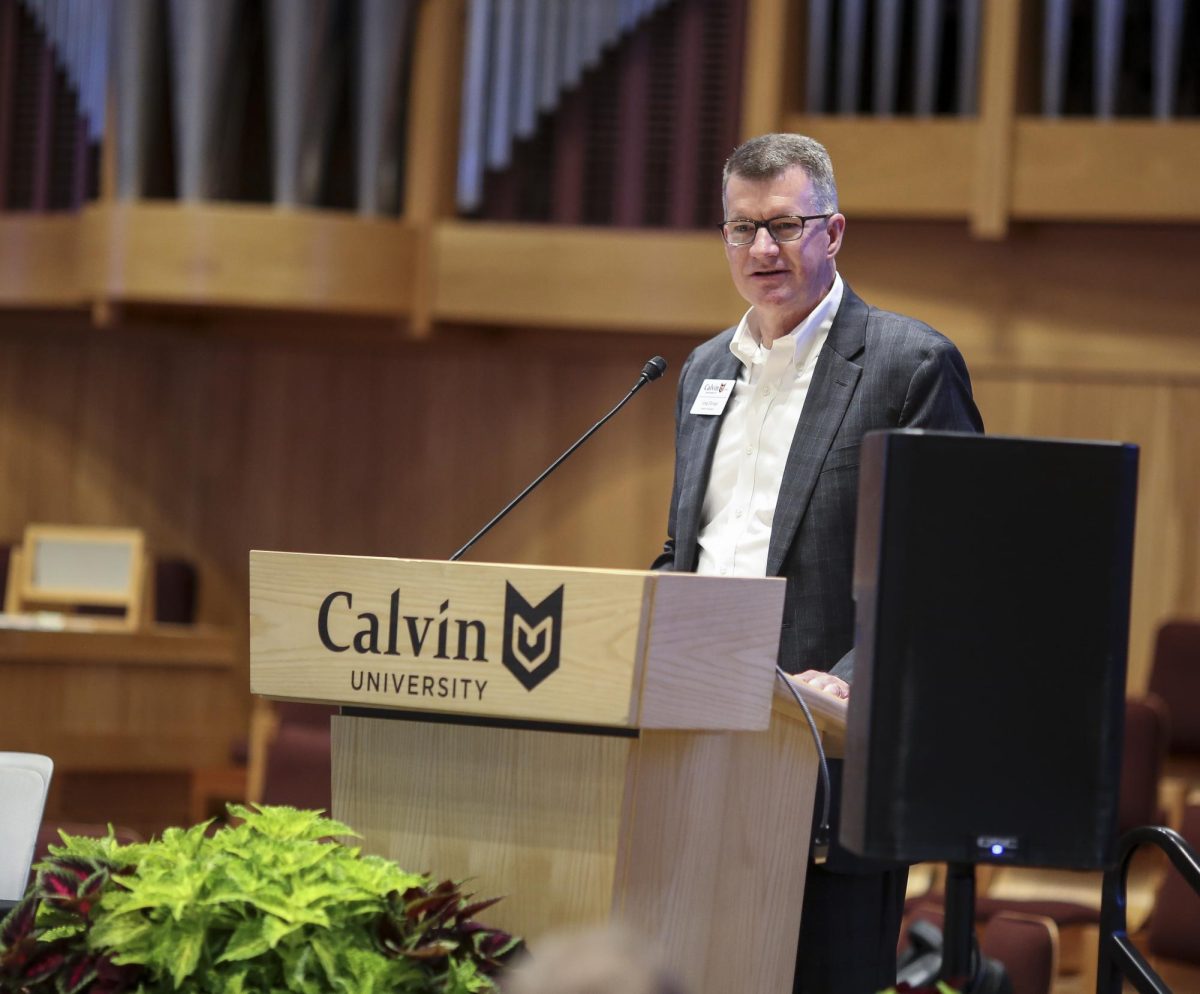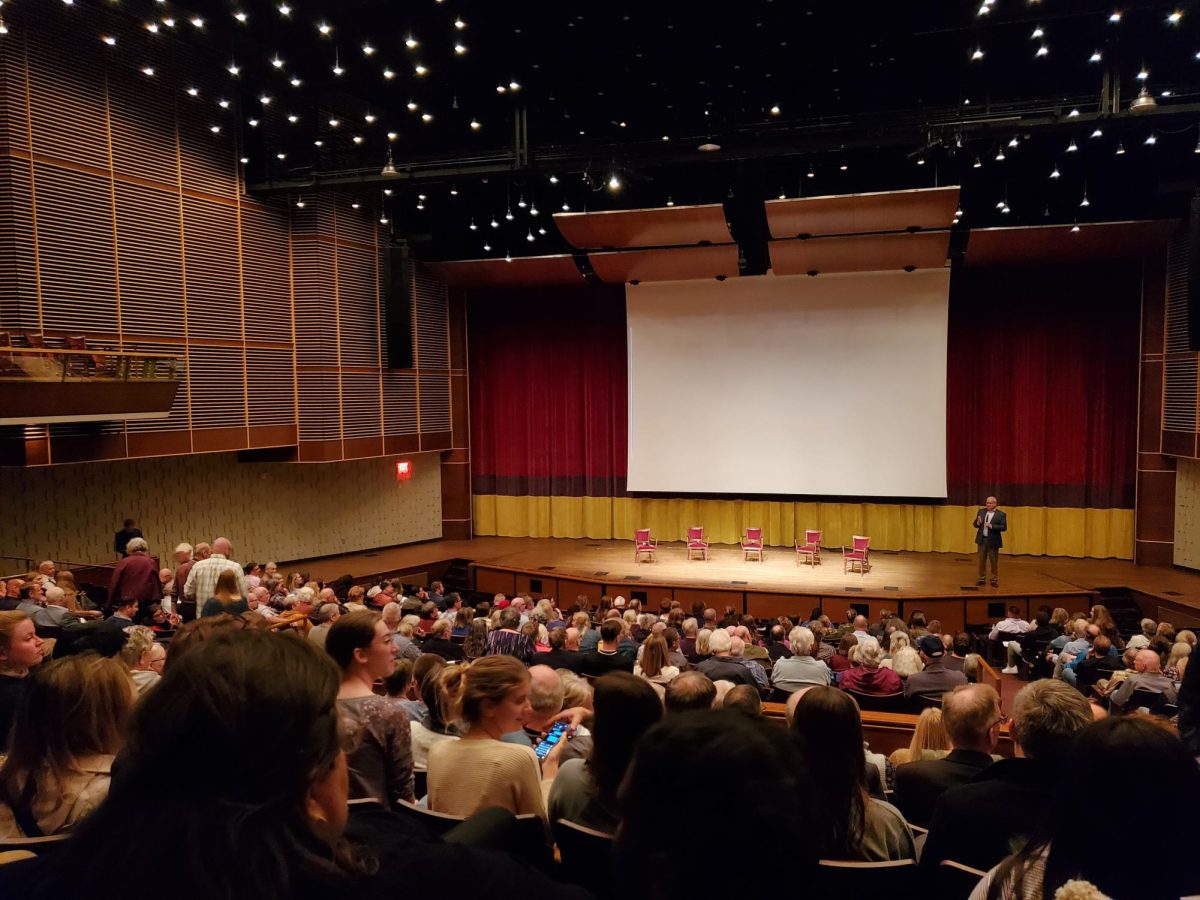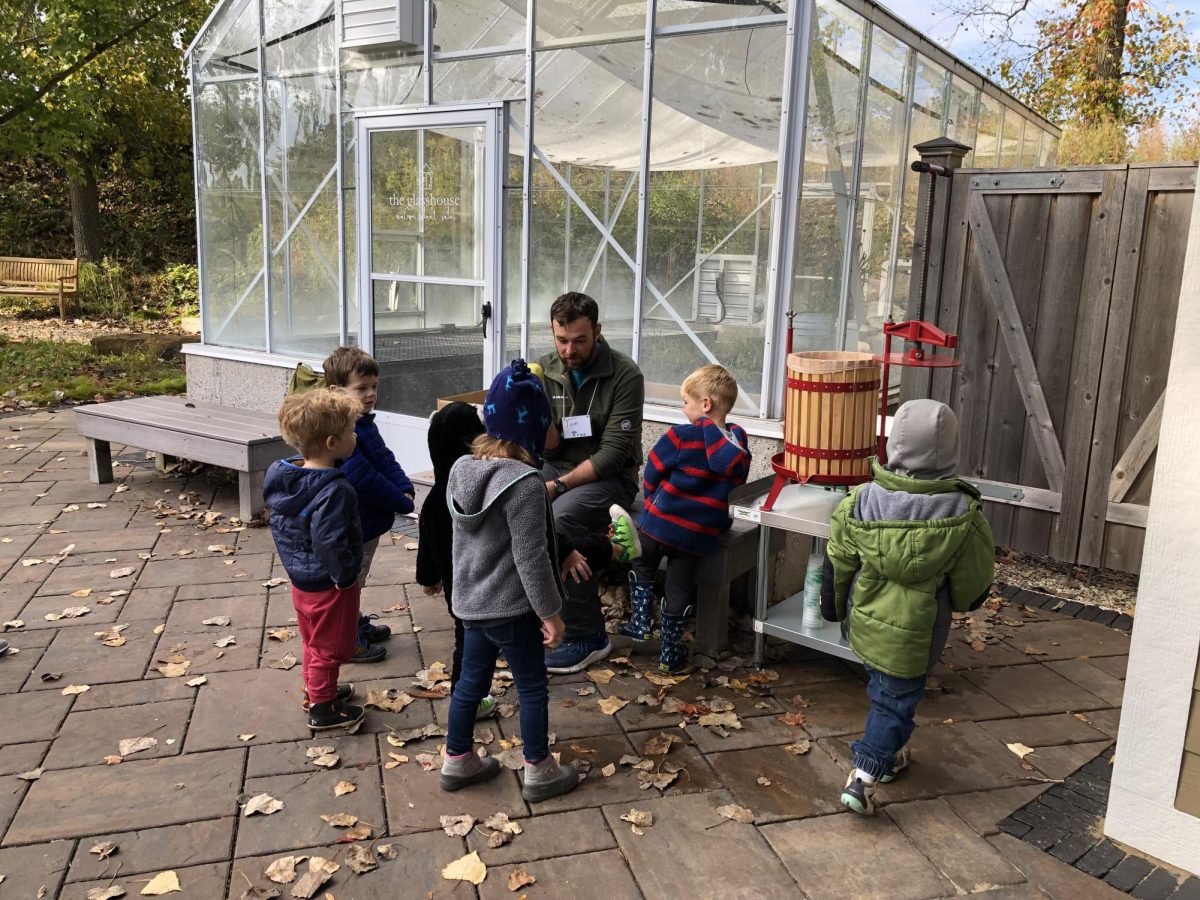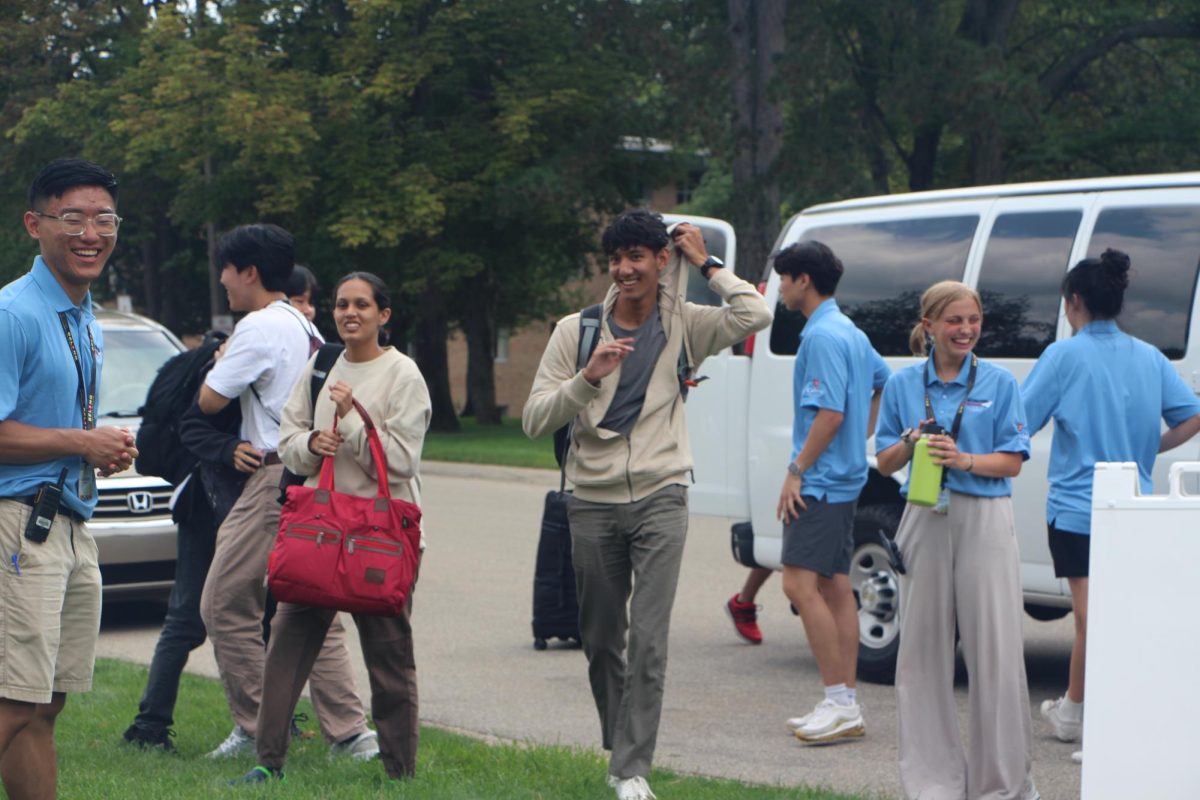Inside your brain right now is a web of about 100 billion nerve cells, each one connected to 10,000 others, constantly firing chemical signals back and forth on microscopic nerve pathways to simultaneously control things like heart rate, body temperature and breathing, all effortlessly.
And when we apply our brains, this mind-blowing organ utilizes its two hemispheres and four lobes to control everything else we consciously do, from memory to muscle movement and everything in between.
Even though we are constantly using it, a complete explanation for how the brain functions remains an enigma.
At Calvin, professors and research students in the psychology department are conducting a variety of studies that analyze different aspects of the human brain.
From experimenting with Oculus Rift virtual reality goggles to measuring the electrical current of brain waves with EEG technology, these studies use a variety of technologies and methods.
Racial Bias And Empathy
Blake Riek, an assistant professor of psychology, is examining racial ingroup and outgroup dynamics, and how a sense of common identity can influence perceptions. When one holds a racial bias, it can alter the way one interprets a situation, especially if that situation involves someone with a different race.
“Both psychological research and current events like Ferguson and the Eric Garner case highlight that fact race bias is still a prevalent issue in our society,” said Riek. “People tend to feel more empathy toward racial ingroup members and act in prosocial ways towards them.”
Riek is interested in how a sense of common identity might bridge any gaps due to racial bias, and to study this, Riek asks participants in his study from Calvin College a series of difficult questions.
“Participants read about an individual who is mistakenly shot and injured by the police.
The person was unarmed, but did flee from the police,” said Riek. “We have manipulated the race of the victim to be either white or black, and, based on previous research, it is expected that participants will be less outraged and have less empathy for the victim when the victim is black.”
But when Riek asks participants the same question again and introduces an element of common identity between the participants and the unarmed person in the questions, he predicts that racial bias will change.
“We also manipulate whether or not the victim is a Calvin College alum,” said Riek. “It is predicted that the participants will not show the racial bias effect described above when the victim is associated with Calvin College.”
Through this study, Riek hopes to find ways of helping people empathize with victims of a different race. “By focusing on commonalities rather than differences,” said Riek, “we can start to break down some of the group boundaries that divide us.”
Victims of Wrongful Conviction
Eric Jones, an assistant professor of psychology, plans to study employment challenges for exonerated individuals. These unique individuals face a particularly complex and difficult set of problems because, although they have served time in jail, they were innocent and wrongly convicted.
“By the time [exonerated individuals] have been released, the wrongful conviction has done irreversible damage,” said Jones. That damage can leave a permanent scar on the record of the individual even though they were innocent, and that can make getting a job difficult.
“On a job application, a standard question asks applicants whether they have ever been convicted of a felony,” said Jones. And although some of the exonerated are able to have their criminal record expunged, he said, many do not have the time or resources to do so.
“Also, in the digital age, it is very easy to find information using Google and other online search engines,” said Jones. “Many employers investigate the backgrounds of applicants by performing online searches.”
With a research student over the summer, Jones will explore the variety of employment challenges faced by exonerated individuals in hopes that uncovering some of these problems might lead to a more just system that fully financially compensates for the exonerated and helps to ensure that their criminal records are erased.
Humor and the Brain
Paul Moes, the psychology department chair, has been studying a rare birth defect that occurs when the physical bridge between the left and right hemisphere of the brain – the Corpus Collosum – is severed.
Without this connection, understanding non-literal language, a process that relies heavily on the communication between the two hemispheres in the brain, can be difficult.
“It’s called Agenesis of the Corpus Collosum,” said Moes, “and what individuals with ACC really suffer from are social difficulties. They have trouble reading emotions; they have trouble in social interactions.”
Every time we use non-literal language – when we tell jokes, use metaphors or speak sarcastically – we take for granted that one side of our brain is communicating with the other in order to infer meaning.
Without the ability to synthesize what was said, how it was delivered and the context of a statement, individuals with ACC can all too easily feel isolated in their daily lives.
Due to its rarity, there has been insubstantial research on the defect, and most people are unaware that it exists. This unfamiliarity can make it difficult for individuals with ACC and their families to understand and cope with social gaps at school, work and other areas.
When studying individuals with ACC, Moes measures comprehension of humor in the brain. “We’re able with our EEG technology to determine the wave pattern in response to the punch line [of a joke],” said Moes.
“On the flip side, we think that people who have a thicker connection should be particularly good at humor, and there is some evidence for this,” said Moes. “For example, there is a disproportionate number of left-handed comedians.”
Moes has done more than simply conduct studies; he has also served on the board for the National ACC Network and has helped launch efforts to help support parents and provide information and further research in the area.
“[Serving on the board] allowed me the opportunity to really get to know parents and really get to know these kids,” said Moes. “It made it personal; it wasn’t just an abstract idea anymore about their brain and about what they can or can’t do. This is their life.”
Quantifying Virtue
Julie Yonker, an assistant professor of psychology, will be conducting a meta-analysis study on virtues and character development this summer. Along with Professor Cawley from the business department and two McGregor students, she is planning to compare, code and statistically analyze 25 years of studies on the subject.
“We hope to fill some gaps in our understanding of how virtues and character strengths can influence adolescents and emerging adults,” said Yonker. “This project should provide a foundation on which the Calvin community can best implement a virtues and character strengths pedagogy with our students.”
Calvin College is among a family of liberal arts schools that emphasize developing a student not just as a future member of the workforce, but also as a virtuous and insightful person.
And though focusing on the holistic approach of teaching character strengths and virtue development can be life-changing for students, it can be difficult to incorporate into the classroom.
In their project called “Virtues and Character Strengths in Adolescents and Emerging Adults – What is the Impact?” Professor Yonker, Professor Cawley and students Nicole Karl and Erika DeKoekkoek will explore the current studies of character development and hope to influence the pedagogy at Calvin.
Testing with Virtual Reality
Joseph Nam, a senior computer science major and art minor, is working on merging the traditional “Big 5” personality test with the virtual reality technology of Oculus Rift DK2, HD goggles that, when worn, can replicate the sensation of motion and display a 100 degree field of vision.
The Big 5 personality test gives an evaluation based on five main categories: openness, conscientiousness, extraversion, agreeableness and neuroticism. Traditionally, this test is taken with pencil and paper, but Nam is exploring how taking the test in a virtual format may or may not affect participants’ answers.
“I test subjects on both a textual test and virtual test in random order, then compare the two data to figure out if there is a correlation between the two,” said Nam.
If the correlation is strong – if there is little difference between the paper test and the virtual test – then Nam’s research may help establish virtual reality technology as a reliable method of psychological testing.
Conversely, if the correlation is weak and participants’ answers vary between the physical test and the virtual test, Nam’s research could raise questions about virtual alter egos and the future of virtual reality testing.
As of now, Nam’s research supports the former. “I have finished testing 21 subjects officially,” said Nam, “and so far the result shows that I have correlation in conscientiousness, openness, extrovert but not so much in neuroticism and agreeableness.”
Noise and Focus
Donald Tellinghuisen, a professor of psychology, and psychology major Steven Lewis are researching the effects of auditory distractions on visual tasks.
“Noise is everywhere around us, but only some of it interferes with what we’re doing,” said Tellinghuisen.
To study how noise affects visual tasks, Tellinghuisen measures a participant’s speed and accuracy when searching for one of two letters that briefly appears on a video screen. While participants concentrate on finding the letter, they are exposed to different noises that can make them lose focus.
“We hypothesize that if the distractor names something about the item that directly relates to the decision needed to perform this task, distraction should occur,” said Tellinghuisen.
“So things like hearing a beep or a letter other than one of the letters being searched for shouldn’t bring about distraction, while hearing a voice say the letter opposite to the one a person is looking for should slow responding.”
Understanding how the brain deals with auditory distractions may offer insights into how people might focus more effectively.
If certain noises are particularly distracting, or if they influence people to act in certain ways, then Tellinghuisen’s research may encourage people to be more attentive to filtering what they do and do not listen to while they perform tasks.
“People have some role in how they interact with the environment,” said Tellinghuisen. “We have some degree of free will in how we focus our attention, and if we have choice, we have the responsibility to use that freedom in a stewardly way.”



